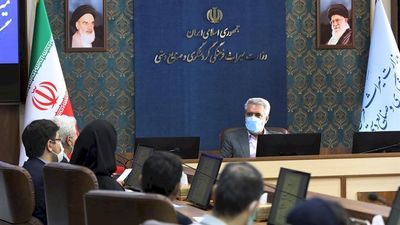The event was held with officials and experts including Deputy Minister of Cultural Heritage, Tourism, and Handicrafts Mohammad-Hassan Talebian.
Mounesan unveiled files for registration on the UNESCO list, including silkworm breeding and silk spinning, Turkmen embroidery, Mehregan celebration, making and playing the oud instrument, Yalda Night celebrations, Iranian caravanserai, accession of Dizmar natural heritage to Hyrcanian forests, accession of Naqsh-e Rajab and Naqsh-e Rostam rock face inscriptions to Persepolis, and the accession of Vank Church to the set of Iranian churches.
The minister highlighted that the preparation of so many files has been an arduous task, underlining that the registration of each national heritage could help avoid the destruction of the precious legacy.
Pointing to the negative impact of cruel sanctions on Iran’s economy, he noted that his ministry has done its utmost to not allow a decline in the annual budget allotted for the Tourism Ministry.
Mounesan added that his ministry has called on Iran’s Ministry of Education to mention Iran’s cultural heritage in school books.
During the ceremony, Talebian referred to Iran’s position in the ninth and seventh ranks of tangible and intangible world heritage, respectively.
Talebian said that Iran has cooperated with Tajikistan, Turkey, Afghanistan, the Republic of Azerbaijan, Turkmenistan and Uzbekistan in order to submit different heritage files to UNESCO.
Source: Iran Daily

